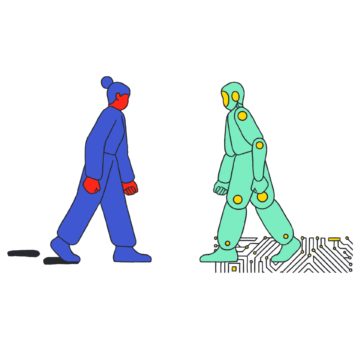Sue Halpern in The New Yorker:
 A little more than a year ago, the world seemed to wake up to the promise and dangers of artificial intelligence when OpenAI released ChatGPT, an application that enables users to converse with a computer in a singularly human way. Within five days, the chatbot had a million users. Within two months, it was logging a hundred million monthly users—a number that has now nearly doubled. Call this the year many of us learned to communicate, create, cheat, and collaborate with robots.
A little more than a year ago, the world seemed to wake up to the promise and dangers of artificial intelligence when OpenAI released ChatGPT, an application that enables users to converse with a computer in a singularly human way. Within five days, the chatbot had a million users. Within two months, it was logging a hundred million monthly users—a number that has now nearly doubled. Call this the year many of us learned to communicate, create, cheat, and collaborate with robots.
Shortly after ChatGPT came out, Google released its own chatbot, Bard; Microsoft incorporated OpenAI’s model into its Bing search engine; Meta débuted LLaMA; and Anthropic came out with Claude, a “next generation AI assistant for your tasks, no matter the scale.” Suddenly, the Internet seemed nearly animate. It wasn’t that A.I. itself was new: indeed, artificial intelligence has become such a routine part of our lives that we hardly recognize it when a Netflix algorithm recommends a film, a credit-card company automatically detects fraudulent activity, or Amazon’s Alexa delivers a summary of the morning’s news.
But, while those A.I.s work in the background, often in a scripted and brittle way, chatbots are responsive and improvisational. They are also unpredictable. When we ask for their assistance, prompting them with queries about things we don’t know, or asking them for creative help, they often generate things that did not exist before, seemingly out of thin air. Poems, literature reviews, essays, research papers, and three-act plays are delivered in plain, unmistakably human language. It’s as if the god in the machine had been made in our image.
More here.
